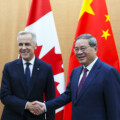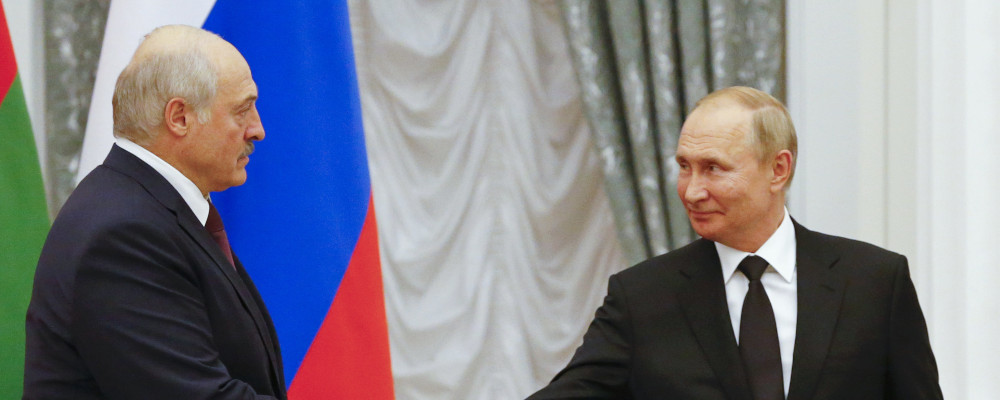Far afield from next week’s speech from the throne and mainstream media attention is a major developing situation in Ukraine that will have far-reaching consequences for global geopolitics.
Ukraine may be subject to a Russian invasion in the coming days and the conflagration could lead to a wider conflict between NATO and Russian forces and even Chinese opportunism in the Indo- Pacific.
The United States government has warned NATO and the European Union that Russia may be preparing for another invasion of Ukraine, similar to the one in 2014. Readers will recall at that time Russia massed forces on the Ukraine frontier and then claimed they were provoked into invasion. On Friday, the Russian Foreign Ministry warned that Russia will not invade Ukraine unless provoked. Yet signs increasingly point in that direction.
The British Chief of Defense Staff Nick Carter, for instance, has warned that Russia and NATO are at their most dangerous point in time since the Cold War.
The pretense of conflict is a draft law before Ukraine’s parliament. Draft law No. 5844 “On the Principles of State Policy of Transition Period” basically outlines a transition plan to counter the armed aggression of the Russian Federation against Ukraine, restore the territorial integrity of Ukraine, restore the operations of central and local government authorities in the temporarily occupied zones, and so on.
Russian Foreign Minister Sergey Lavrov has warned that if Ukraine’s parliament adopts the law, the Russian government views it as withdrawal from the Minsk Treaty and grounds for war.
This would likely have broad consequences for the region, world, and even Canada. There are currently some 540 Canadian soldiers in a NATO tripwire force in Latvia and some 200 helping to training the Ukrainian military in harm’s way.
So far the Trudeau government has provided little meaningful comment in the face of this growing Russian aggression even though we have an ongoing Canadian presence in the region and the world’s third largest Ukrainian diaspora.
On the ground in occupied Ukraine and near the Russo-Ukrainian frontier the Russian military has deployed a massive force both of air and ground units and additional naval forces in the Black Sea geared to amphibious operations. Russia still has 90,000 troops deployed in and around Ukraine.
Recent Russian troop movements over the last month have seen elements of 41st Combine Arms Army (CAA), 1st Guards Tank Army (GTA), and 58th CAA on the move to the North of Ukraine and are also said to be reinforcing permanently based units of the 20th and 8th CAA and 22nd Army Corps in Crimea to the South. T-80 main battle tanks most likely of the Russian 4th Tank Division the ‘spear of 1st GTA’ and MSTA-S SPGs are reported now in Maslovka, 30 kilometres from the Ukrainian border. Equipment of 1st GTA was also observed in Voronezh. There are some 32,000 Russian troops in occupied Crimea. Russian forces as deployed could, in short, carry out a massive Northern and Southern pincer type attack directed at Ukraine any time they want.
It is important to note that Russia used its massive September Zapad exercises to exchange equipment and reinforced logistics hubs. Iskander dual-capable Short Range Ballistic Missiles and Air defenses, Electronic Warfare, engineer and logistics units are deployed near the border. Pictures have shown lots of bridging equipment moving by rail. Again very recently, BM-21 Grad K MLRSs have been found dug in in the occupied Donbass. These rocket systems are not operated by Russian surrogates in the Donbass, they are only operated by the Russian Army. In a further tightening of the screws Russia is cutting off gas, oil, and coal to Ukraine in further hybrid activities.
Meanwhile to complicate any NATO response, Russian and Belarusian paratroopers are engaged in joint unscheduled exercises near the Polish and Lithuanian frontier. Russian strategic aviation escorted by Belarusian and Russian fighters are carrying out patrols and mock attacks on targets in Belarus. Belarusian forces supported by Russia are increasingly engaged in hybrid warfare operations directed at Poland, Lithuania, and Latvia. Belarusian dictator Alexander Lukashenko has said he has an agreement with Russia for Russian and Belarusian forces to jointly safeguard Belarusian territory.
Belarus continues to militarize a mass of between 8,000-20,000 refugees of Middle East origin against the Baltic states Latvia, Lithuania and Poland on Russia’s behalf. Belarusian forces attempted to blind Polish border troops with lasers and dazzles as Belarusian forces attempted to dismantle the Polish border barriers. This follows other reports of Belarusian forces attempting to infiltrate the Baltic states in small groups among migrants.
The strategic Suwalki gap is very vulnerable and would be in a state of peril if the Belarusians could infiltrate the area supported by Russian forces. The Suwalki gap is a nightmare to defend against Russian forces with its flat narrow strip of land wedged between Belarus and Russia’s Kaliningrad exclave, and that connects the NATO-member Baltic States to Poland. The U.K. has deployed tripwire forces to the Polish border with Belarus. Russia is also stoking possible Serb withdrawal from Bosnia and Herzegovina.
In summary, it would seem that Russian hybrid operations in Serbia and against Poland and the Baltic States are part of a distraction for Russian action against Ukraine and potential further invasion of that country as it did in 2014. Belarus is now a Russian vassal state likely soon to be merged with the Russian motherland. Right now it serves as a convenient Russian surrogate for action against NATO and a potential off-ramp to escalation in what could turn to a wider conflict. It gives Russia plausible deniability and grounds to formally take over the country as a stabilizing factor if Lukashenko is seen to go too far, such as ‘little green men’ or hybrid forces seizing the Suwalki gap.
A further danger is that Russian action against Ukraine and Northern Baltic Europe has the potential to distract the U.S. from Chinese action either against Taiwan, the Pratas Islands, Japan’s Senkakus, the South China Sea or India. This would further weaken strained US strategic alliance interests in both Europe and the wider Indo-Pacific.
What does this mean for Canada? Canada cannot afford to appease the Russians on Poland and the Baltic states, Ukraine or China in the Indo-Pacific. Lines are being drawn and the Trudeau government, so out of its comfort zone on international security, is doing its characteristic dithering routine and being left behind as an unreliable and weak ally as we recently saw in the ‘Three Eyes’ alliance of the US, UK, and Australia.
The Trudeau government needs to reinforce Canadian units in Latvia and Ukraine before it is too late while at the same time forward-deploying naval surface, subsurface and maritime aircraft to allied bases in the western Pacific even perhaps Taiwan to ward of both hegemonic dictatorships and to show we are a solid ally in times of crisis and not the dithering dilettante our friends and enemies think we are. We have far ranging strategic interests at stake and they are not served by sitting on a wall like Humpty Dumpty.
Recommended for You

Federal spending on Old Age Security will outpace child care, housing, and postsecondary education combined
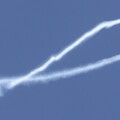
Canada is shopping for new fighter jets—and on the verge of making a disastrous decision
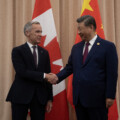
China is not the answer for Canadian prosperity
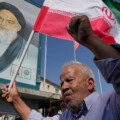
‘It was a harbinger’: How the 1979 Iranian Revolution still shapes the world
